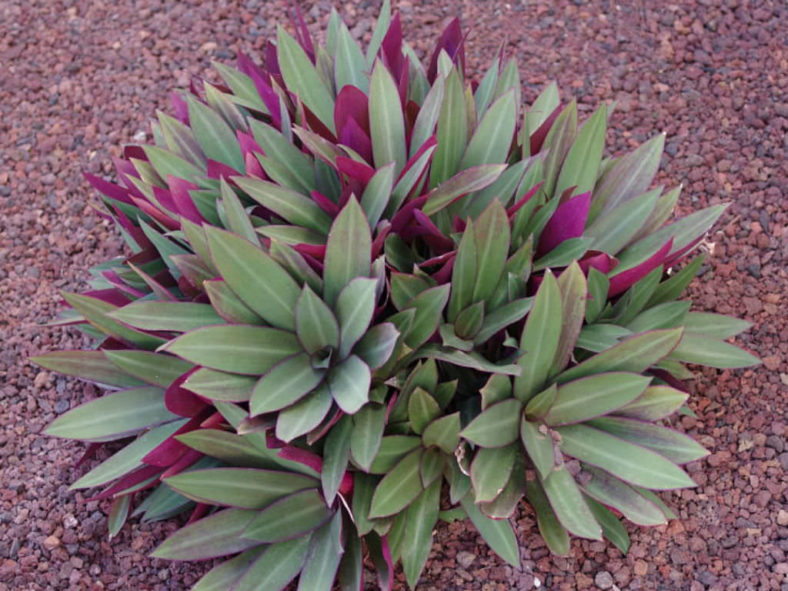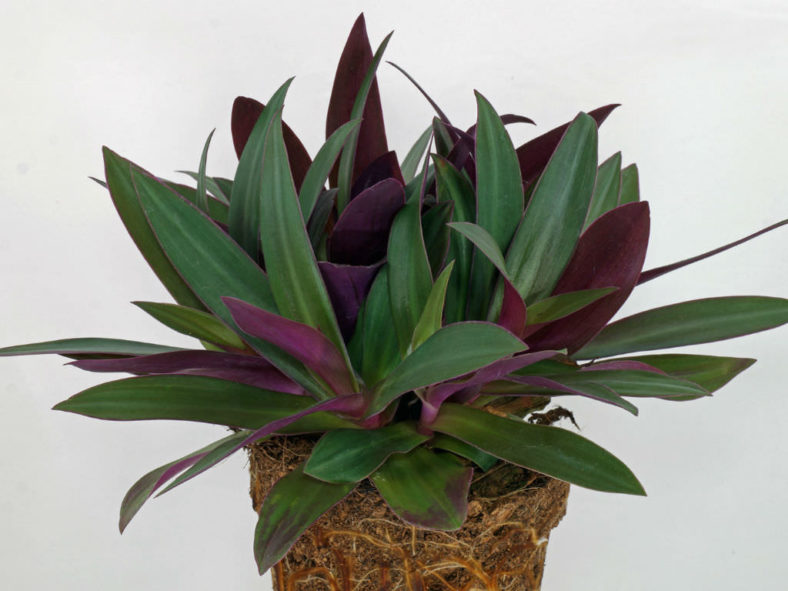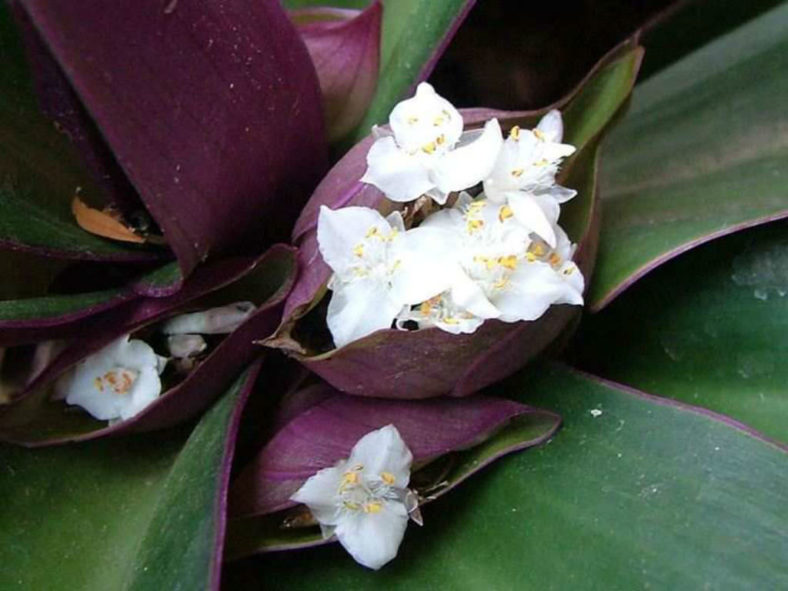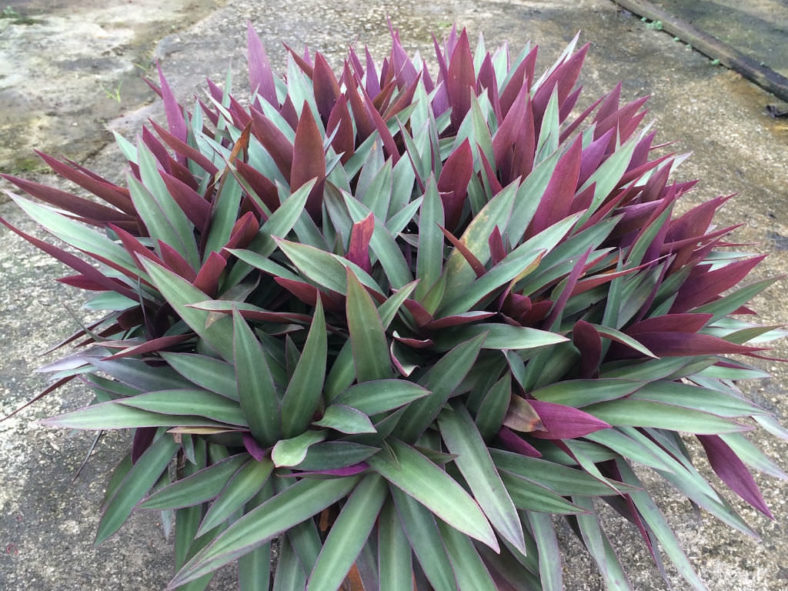Scientific Name
Tradescantia spathacea Sw.
Common Name(s)
Moses-in-the-cradle, Christ in the Cradle, Moses-in-a-basket, Oyster Plant, Boat Lily
Synonym(s)
Ephemerum bicolor, Ephemerum discolor, Rhoeo discolor, Rhoeo spathacea, Tradescantia discolor, Tradescantia odoratissima, Tradescantia versicolor
Scientific Classification
Family: Commelinaceae
Subfamily: Commelinoideae
Tribe: Tradescantieae
Subtribe: Tradescantiinae
Genus: Tradescantia
Description
Tradescantia spathacea is a beautiful small plant that forms clumps of rosettes of sword-shaped dark green leaves with purple undersides. It can reach up to 12 inches (30 cm) in height and 3 inches (7.5 cm) wide. The leaves are stiff, sword-shaped, ascending, and can measure up to 12 inches (30 cm) long.
The flowers are white, enclosed by boat-shaped purple bracts, and appear in axillary cymes throughout the year. The fruits are 3-celled capsules.

Hardiness
USDA hardiness zones 9a to 11b: from 20 °F (−6.7 °C) to 50 °F (+10 °C).
How to Grow and Care
Growing Tradescantia is easy, and you will find the plants quite resilient. These plants typically grow in moist, well-drained, and acidic (pH 5 to 6) soil. Tradescantias do best in partial shade but will do equally well in sunny areas if the soil is moist.
You can grow Tradescantia indoors, too, if suitable conditions are given. Provide the plant with a soilless mix or loam-based potting compost and keep it in bright filtered light. You should also pinch out the growing tips to encourage bushier growth.
Allow it to spend warm spring and summer days outdoors, if feasible. Water moderately during active growth and apply a balanced liquid fertilizer every four weeks. Water sparingly in winter.
These plants like to be kept fairly moist, so water regularly, especially when growing in containers. Cutting the plants back once flowering has ceased can promote a second bloom and will help prevent re-seeding. Cut back the stems about 8 to 12 inches (20 to 30 cm) from the ground.
See more at How to Grow and Care for Tradescantia.
Origin
Tradescantia spathacea is native to Belize, Guatemala, and southern Mexico but widely cultivated as an ornamental and naturalized in parts of Florida, Texas, Hawaii, and various oceanic islands.
Links
- Back to genus Tradescantia
- Succupedia: Browse succulents by Scientific Name, Common Name, Genus, Family, USDA Hardiness Zone, Origin, or cacti by Genus
Photo Gallery
Click on a photo to see a larger version.



